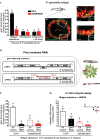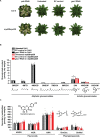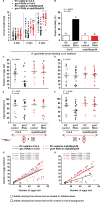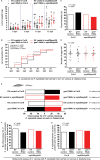Tritrophic metabolism of plant chemical defenses and its effects on herbivore and predator performance
- PMID: 31841109
- PMCID: PMC6934381
- DOI: 10.7554/eLife.51029
Tritrophic metabolism of plant chemical defenses and its effects on herbivore and predator performance
Abstract
Insect herbivores are frequently reported to metabolize plant defense compounds, but the physiological and ecological consequences are not fully understood. It has rarely been studied whether such metabolism is genuinely beneficial to the insect, and whether there are any effects on higher trophic levels. Here, we manipulated the detoxification of plant defenses in the herbivorous pest diamondback moth (Plutella xylostella) to evaluate changes in fitness, and additionally examined the effects on a predatory lacewing (Chrysoperla carnea). Silencing glucosinolate sulfatase genes resulted in the systemic accumulation of toxic isothiocyanates in P. xylostella larvae, impairing larval development and adult reproduction. The predatory lacewing C. carnea, however, efficiently degraded ingested isothiocyanates via a general conjugation pathway, with no negative effects on survival, reproduction, or even prey preference. These results illustrate how plant defenses and their detoxification strongly influence herbivore fitness but might only subtly affect a third trophic level.
Keywords: A. thaliana; Chrysoperla carnea; Plutella xylostella; ecology; glucosinolate/Isothiocyanate; metabolism; multitrophic.
© 2019, Sun et al.
Conflict of interest statement
RS, XJ, MR, JG, SP, DG No competing interests declared
Figures
















References
-
- Bautista MA, Miyata T, Miura K, Tanaka T. RNA interference-mediated knockdown of a cytochrome P450, CYP6BG1, from the diamondback moth, Plutella xylostella, reduces larval resistance to permethrin. Insect Biochemistry and Molecular Biology. 2009;39:38–46. doi: 10.1016/j.ibmb.2008.09.005. - DOI - PubMed
-
- Beran F, Pauchet Y, Kunert G, Reichelt M, Wielsch N, Vogel H, Reinecke A, Svatoš A, Mewis I, Schmid D, Ramasamy S, Ulrichs C, Hansson BS, Gershenzon J, Heckel DG. Phyllotreta striolata flea beetles use host plant defense compounds to create their own glucosinolate-myrosinase system. PNAS. 2014;111:7349–7354. doi: 10.1073/pnas.1321781111. - DOI - PMC - PubMed
Publication types
MeSH terms
Substances
LinkOut - more resources
Full Text Sources
Other Literature Sources

